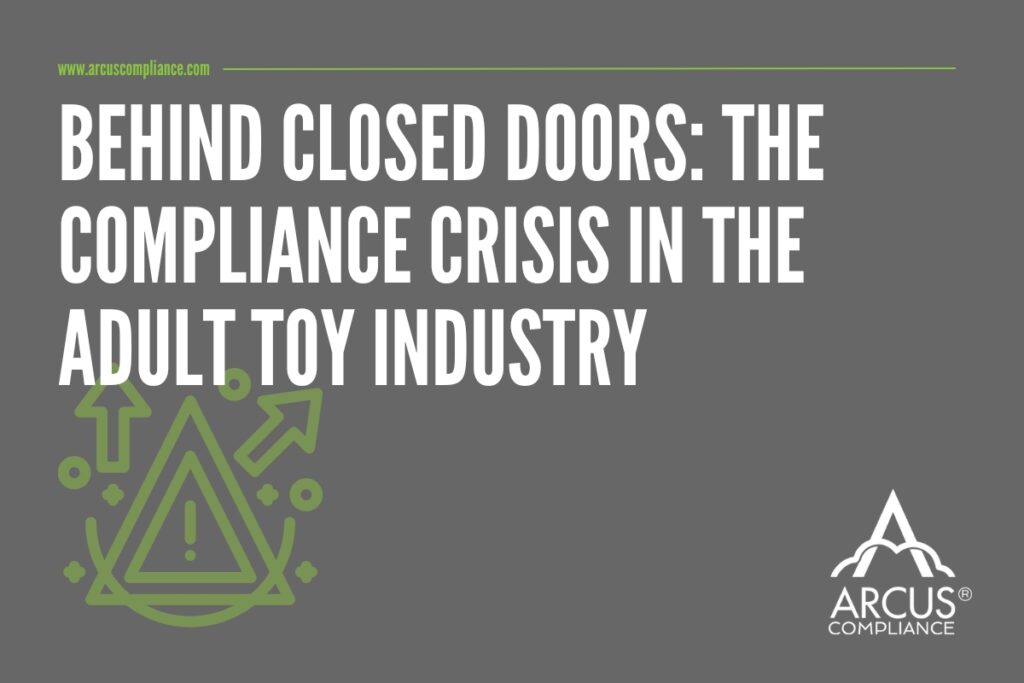
Subheading:
Too many brands are hiding behind the absence of specific regulation. It’s time we call out the pretenders and demand better for the safety of consumers and the integrity of the industry.
Let’s be honest.
The adult toy industry has boomed. Innovation, inclusivity, and liberation have propelled it into the mainstream. But behind the glossy branding, sensual marketing, and “body-safe” labels, a darker truth lingers, one that too many brands are hoping you don’t notice.
Because let’s face it: many of them aren’t doing enough.
And deep down, they probably know it.
The Myth of “Body-Safe”
You’ll see the words “body-safe silicone” slapped across packaging like it’s a magic phrase. But where’s the data? Where’s the biocompatibility report? Where’s the evidence that it’s been tested on mucous membranes, not just skin? If you’re putting something in your body, don’t you deserve more than a marketing buzzword?
“Body-safe” is not a claim, it’s a responsibility. And it’s one that too many brands are dodging because there’s no single adult toy-specific regulation forcing their hand.
Grey Areas, Dirty Practices
The lack of an industry-specific EU or UK regulation is a double-edged sword. On one hand, it gives brands the flexibility to innovate. On the other, it creates a regulatory vacuum where corner-cutters thrive.
We’re talking:
- Incomplete or non-existent technical files
- RoHS reports from questionable Chinese test houses
- No traceability of component materials
- No REACH compliance or SVHC assessments
- No clinical evidence for “biocompatibility”
And don’t even get us started on post-market surveillance. Most brands don’t even know what it means, let alone have an appropriate system to handle it.
Cheap Doesn’t Mean Cheerful — It Means Risky
When a toy is selling for under £20 online and it’s shipped in a polybag with a QR code for “instructions,” do you really think the manufacturer paid for proper testing, CE documentation, and a clinical toxicology review?
Let’s stop pretending.
There are reputable labs that can do RoHS, CE/UKCA, biocompatibility, and phthalate analysis, but they aren’t the ones these brands are using. Because proper testing costs money. And when your business model is volume and drop-shipping, the margin doesn’t stretch far enough for integrity.
The Illusion of Clean
Consumers are being sold a lie. The packaging might be minimal and aesthetic, the brand might talk about empowerment and wellness, but if the supply chain behind that product is opaque, it’s not ethical. It’s not safe. It’s performative compliance at best.
This Wild West Is Ending: Digital Product Passports Are Coming
Here’s the kicker: the grey area is shrinking, fast!
The EU is already rolling out Digital Product Passports (DPPs), and they’re not just for electronics or fashion. These passports will require transparent, verifiable data on a product’s safety, environmental footprint, and regulatory compliance, linked to QR codes or RFIDs, trackable throughout the supply chain.
And with AI-powered enforcement tools, authorities no longer need to manually comb through documentation. They can run batch scans of online listings, spot red flags, and issue take-downs or penalties in seconds.
If you think you can keep flying under the radar, think again.
This is your last chance to get your house in order.
What Good Looks Like
✔ Full technical documentation (including risk assessments, traceability, and DoCs)
✔ Biocompatibility testing that matches the actual route of exposure
✔ REACH and RoHS reports from ILAC-accredited labs
✔ Post-market surveillance procedures that flag defects and react to complaints
✔ A clear responsible person based in the EU/UK
✔ Evidence that they give a damn about consumer safety, not just margins
It’s Time to Raise the Bar
If you’re a brand in this space, ask yourself:
- Could you produce your Declaration of Conformity within 24 hours of a market surveillance request?
- Could you back up your “body-safe” claim with real data?
- Are you confident that your testing house is independent, competent, and accredited?
If the answer’s no, you’re part of the problem.
Final Word: This Isn’t Just About Compliance — It’s About Integrity
When you’re selling a product that people use in the most vulnerable, intimate parts of their body, “good enough” isn’t good enough. Consumers deserve better. The industry deserves better. And frankly, it’s time to stop hiding behind the lack of regulation and start behaving like the sector you claim to be.
Because soon, the spotlight’s coming.
And when it does, you’ll either be proud of what you’ve built, or you’ll be exposed.
If you’re one of the good guys and just need a little help, visit our ARC Methodology website and take our free compliance assessment scorecard. Simply answer 30 questions and we’ll send you a free bespoke 25+ page report tailored to your needs, highlighting weaknesses and a roadmap for improvement.
